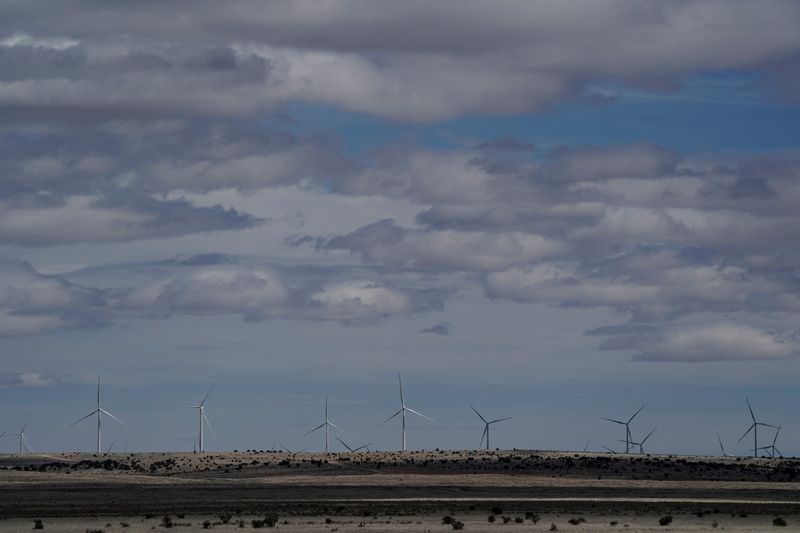By Patturaja Murugaboopathy and Tommy Wilkes
BENGALURU/LONDON (Reuters) -Investors ditched renewable energy funds at the fastest rate on record in the three months to end-September as cleaner energy shares took a beating from higher interest rates and soaring material costs, which are squeezing profit margins.
Renewable energy funds globally suffered a net outflow of $1.4 billion in the July-September quarter, the biggest ever quarterly outflow, according to LSEG Lipper data.
However, the outflows only partially reversed the trend for the first half of 2023 when investors added a net $3.36 billion, the data showed.
The sector's total assets under management now stand at $65.4 billion, a 23% decline from end-June, according to the data.
Investors have been exiting traditional energy funds, too, but the rate has slowed - net outflows reached $438 million in the last quarter compared with $3.32 billion in the previous three months.
Renewable energy firms with high growth potential are vulnerable to rising interest rates as they eat into the value of future cash flows.
Companies including Denmark's Orsted, the world's largest offshore wind farm developer, and U.S. panel maker First Solar have seen sharp share price falls in recent months.
"Renewable energy funds have faced weakened sentiment due to company performances in recent quarters and a shift in investor attention this year towards other themes like AI and U.S. Infrastructure," said Global X research analyst Madeline Ruid.
Long permitting timelines, project delays, high rates and elevated material costs - particularly for wind and solar power - have weighed on firms, Ruid said.
The iShares Global Clean Energy Exchange Traded Fund lost a net $278.4 million in the last quarter, the data showed. Investors pulled a net $218.3 million and $199.1 million from the Hallbar Energi and iShares Global Clean Energy UCITS ETF USD (Dist), respectively.
Demand for exposure to renewable energy had been a major driver of cash flowing into climate-related funds in recent years.
However, "climate transition" funds - which invest in companies that want to decarbonise faster - and "climate solutions" funds are the biggest sectors "as investors look for investment opportunities beyond the renewable energy sector", data provider Morningstar said in a recent report.
The S&P Global Clean Energy Index, comprised of major solar and wind power companies and other renewables-related businesses, has lost 30% in 2023, with nearly all of the decline since July.
By contrast, the oil and gas-heavy S&P 500 Energy Index is up slightly this year.
"As long as rates remain elevated, renewable energy growth will remain challenged and subdued for new capital projects, as they're pushed further out on the calendar," said Rich Pontillo, Lead Advisory at Nasdaq IR Intelligence.

Wind projects off Britain, the Netherlands and Norway have been delayed or shelved due to rising costs and supply chain constraints, raising concerns about countries hitting their 2030 renewable energy targets.
Pontillo, however, said that "massive" U.S. government subsidies to spur investment in greener technologies would support the industry's "next upcycle".